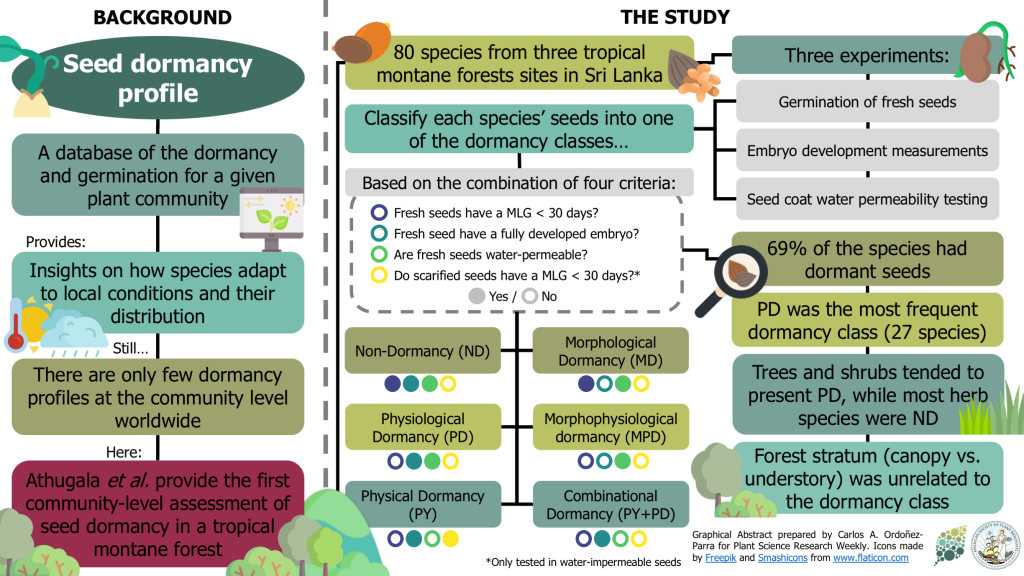
The first dormancy profile for a tropical montane forest community (Plant Biol.) ($)
Plant Science Research Weekly
Seed dormancy is a crucial mechanism to synchronize germination with the most suitable environmental conditions. Therefore, assessing its prevalence at the community level allows us to understand how plants adapt to their local environment. In this paper, Athugala and colleagues build the first dormancy…
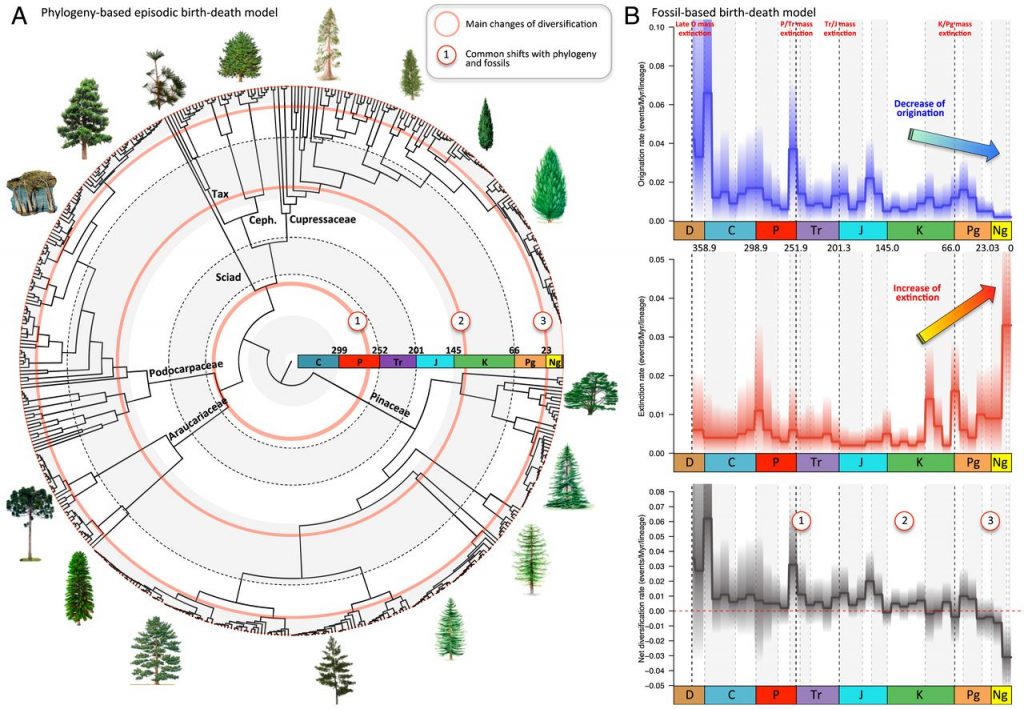
The rise of angiosperms pushed conifers to decline during global cooling (Proc. Natl. Acad. Sci. USA)
Plant Science Research Weekly
During the Triassic and Jurassic periods (approximately 250 – 140 million years ago), Earth was dominated by gymnosperms including conifers. Today, the number of species and individuals is greatly reduced from their heyday, and instead Earth is dominated by angiosperms. Although it is widely stated…
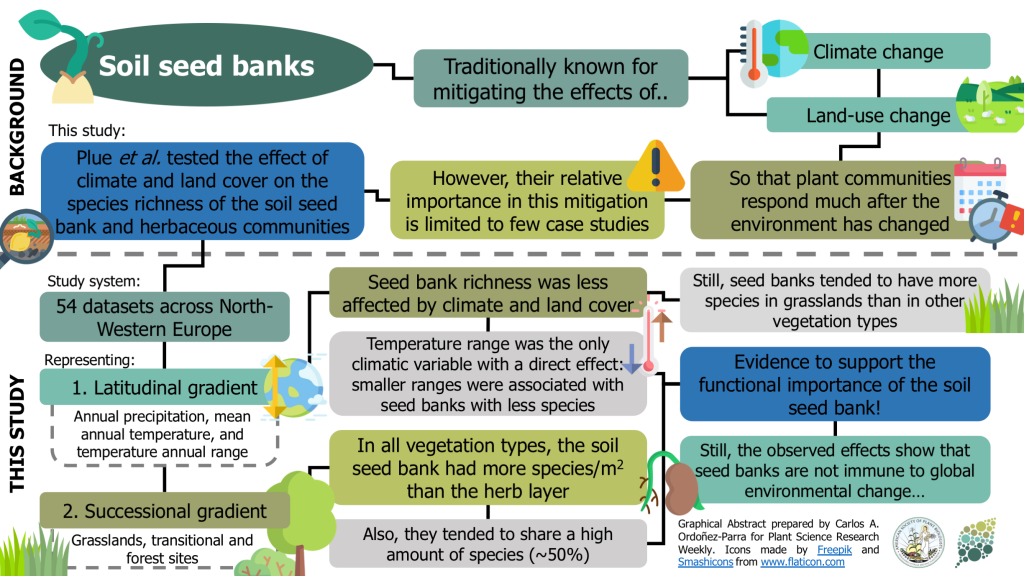
Buffering effects of soil seed banks on plant community composition in response to land use and climate (Glob. Ecol. Biogeogr.)
Plant Science Research Weekly
Plant communities seem to be able to mitigate the effects of climate and land-use change, given their responses are usually observed long after environmental conditions have changed. This lagged response has been attributed to the presence of persistent soil seed banks. Still, the evidence of their…

Burning grasses, poor seeds: Post-fire reproduction of early-flowering Neotropical savanna grasses produces low-quality seeds (Plant Ecol.) ($)
Plant Science Research Weekly
Fire is a disturbance that underpins several ecological processes in tropical savannas. For instance, some plant species from these ecosystems are traditionally known for relying on fires to reproduce. However, this dependency remains to be formally tested. Also, the impact of fire on seed quality…
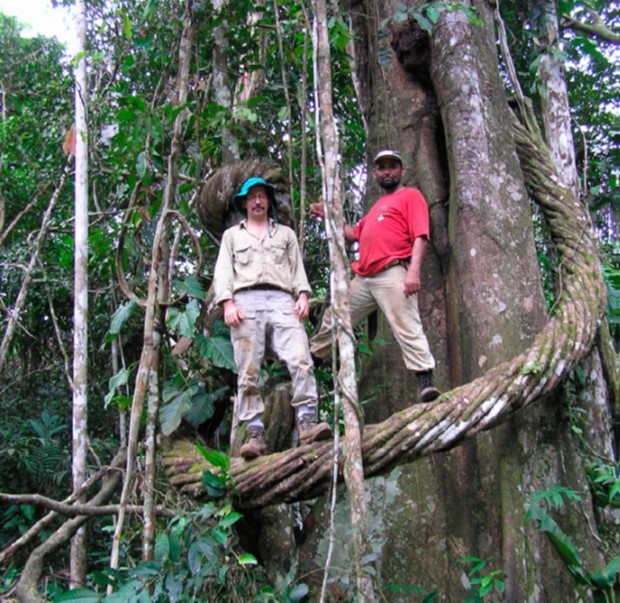
Opinion. We have been in lockdown, but deforestation has not (Proc. Natl. Acad. Sci. USA)
Plant Science Research WeeklyDouglas Daly is the B. A. Krukoff Curator of Amazonian Botany, Institute of Systematic Botany at the New York Botanic Garden, and a specialist in tropical tree systematics and the flora of the Amazon region. In this Opinion article, he reflects on how he and other field-based botanists have kept their…
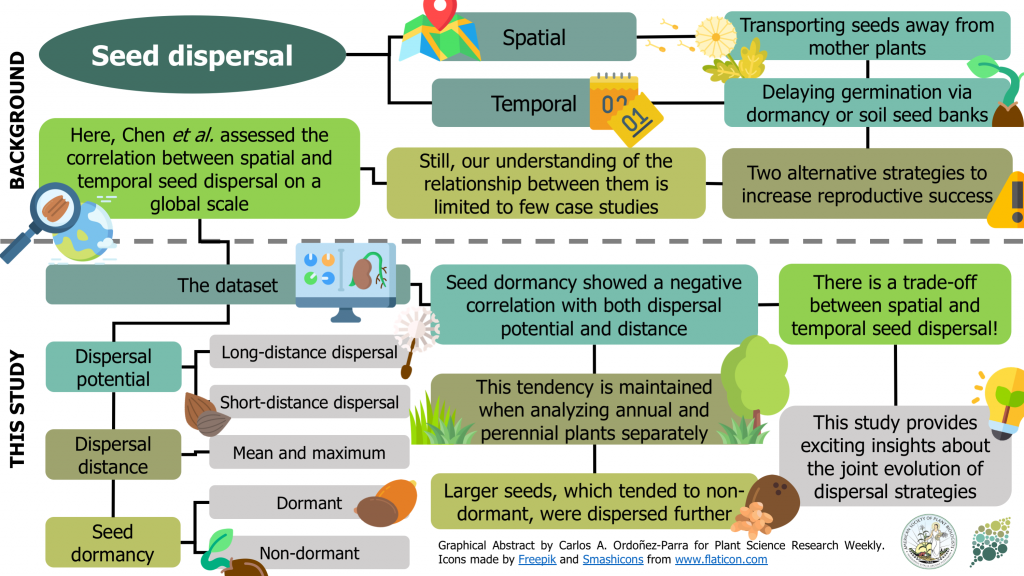
Review: Trade‐off between seed dispersal in space and time (Ecol. Lett.)
Plant Science Research Weekly
Seeds can be dispersed in space (i.e., away from their mother plants) or time (i.e., delayed germination via seed dormancy or persistent soil seed banks). These contrasting strategies have traditionally been considered to increase reproductive success, but our understanding of their relationship is…
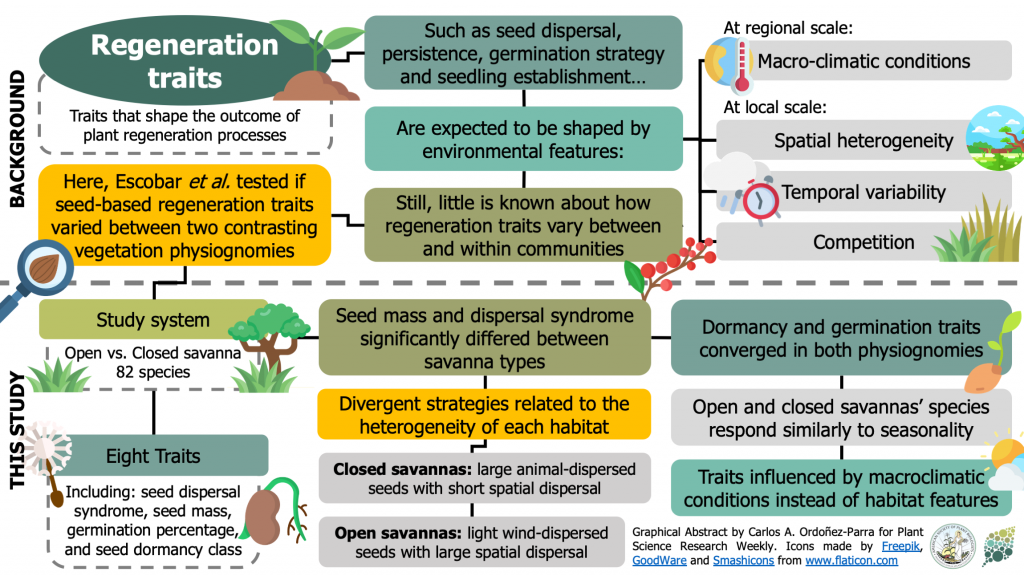
Do regeneration traits vary according to vegetation structure? A case study for savannas ($) (J. Veg. Sci.)
Plant Science Research WeeklyRegeneration traits –such as germination strategies, seed dormancy, and seedling establishment– are presumably shaped by environmental variables that operate at different temporal and spatial scales. However, empirical evidence about the variation is lacking for most regeneration seed traits. Here,…
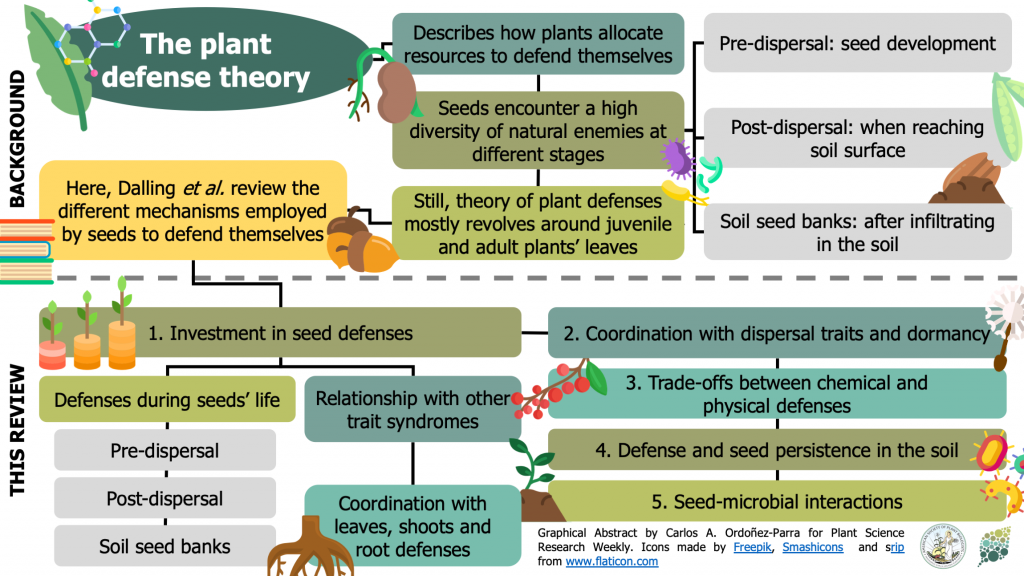
Review: Extending Plant Defense Theory to Seeds (Annu. Rev. Ecol. Evol. Syst.) ($)
Plant Science Research WeeklyPlants have developed multiple mechanisms to deal with the natural enemies they encounter through their life. In consequence, the Plant Defense Theory has arisen to assess how plants allocate resources to this purpose. However, much of the efforts in this matter has revolved around the defense that occurs…
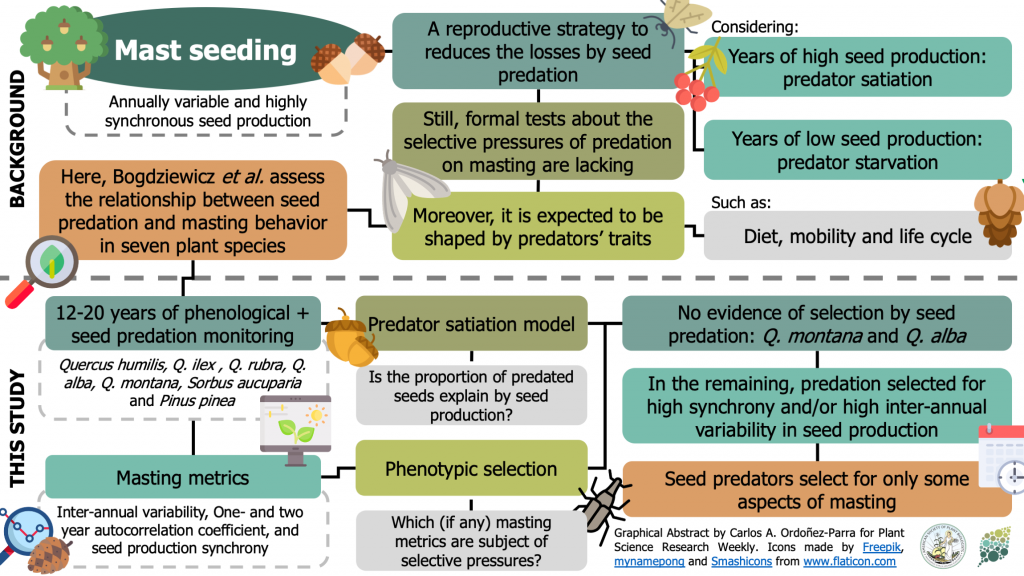
Seed predation selects for reproductive variability and synchrony in perennial plants (New Phytol.) ($)
Plant Science Research WeeklyInstead of regularly flowering and fruiting each year, some long-lived species exhibit annually variable reproduction events. This phenomenon, known as masting, is considered an adaptation to reduce the losses from seed predation: in years of high reproduction, seeds are so abundant that predators become…

